Titanic (1943 film)
6.4 /10 1 Votes6.4
Duration | 6.4/10 IMDb Genre Action, Drama, History | |||||||||||||||||||||||||||||||||
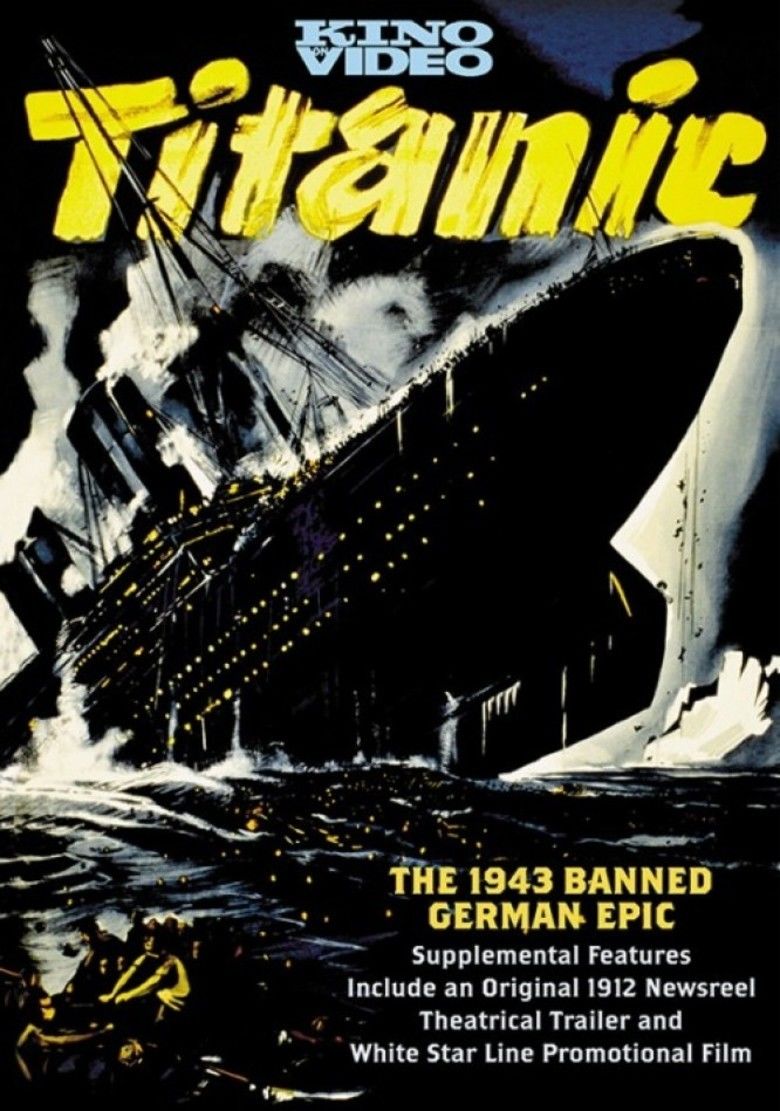 | ||||||||||||||||||||||||||||||||||
Director Werner KlinglerHerbert Selpin Release date 10 November 1943 (1943-11-10) Genres Drama, Propaganda film, Disaster Film, Black-and-white, World cinema Cast (Sigrid Olinsky), (Offizier Petersen), (Gloria), (John Jacob Astor), (Kapitän Edward J. Smith), (Hunderson) Similar movies 20,000 Leagues Under the Sea , Pirates of the Caribbean: On Stranger Tides , Titanic , Pirates of the Caribbean: Dead Man's Chest , Pirates of the Caribbean: At World's End , The Abyss | ||||||||||||||||||||||||||||||||||
Titanic is a 1943 German propaganda film made during World War II in Berlin by Tobis Productions for UFA. Despite the fact that a British company had already released a German-language film about the RMS Titanic in 1929, the film was commissioned by Nazi Propaganda Minister Joseph Goebbels with the intent of showing not only the superiority of German filmmaking, but also as a propaganda vehicle which would show that British and American capitalism was responsible for the disaster. The addition of an entirely fictional heroic German officer to the ship's crew was intended to demonstrate the superior bravery and selflessness of German men as compared to the British officers.
Contents
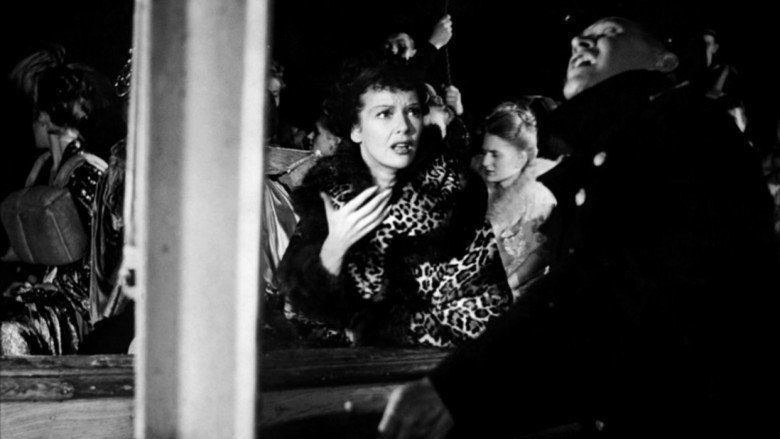
The film's original director, Herbert Selpin, was arrested during production after speaking out against the Nazi regime – he was later found hanged in prison – and the film was completed by Werner Klingler, who was not credited.

Although the film had a brief theatrical run in parts of German-occupied Europe starting in November 1943, it was not shown within Germany by order of Goebbels, who feared that it would weaken the German citizenry's morale instead of improving it. Goebbels later banned the playing of the film entirely, and it did not have a second run.
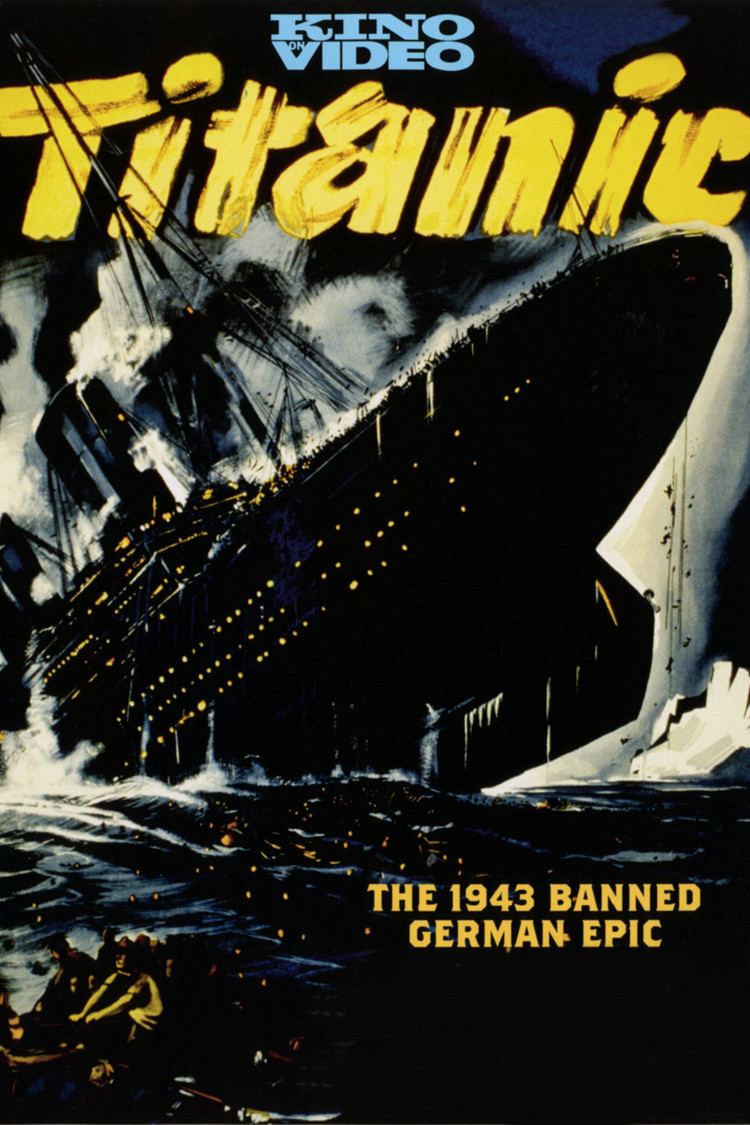
The "Nazi Titanic" film was the first on the subject which was simply titled Titanic, and the first to combine various fictional characters and subplots with historical personae and events of the sinking; both conventions went on to become a staple of Titanic films.
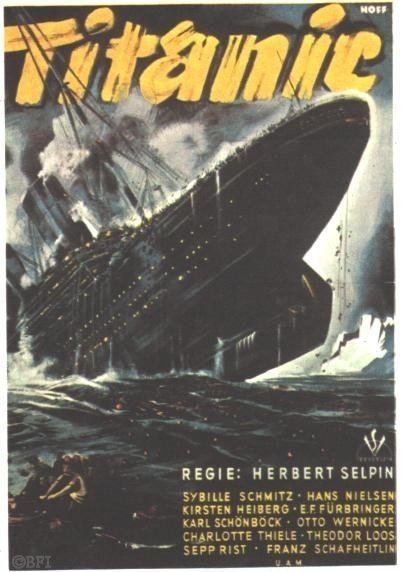
Plot
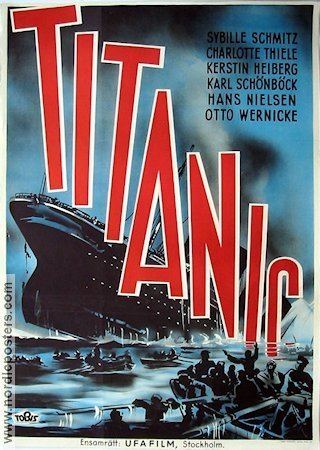
A proclamation to the stockholders of the White Star Line declares the value of their stock is falling. The president of the Line, J. Bruce Ismay (E.F. Fürbringer), promises to reveal a secret during the maiden voyage of the line's new RMS Titanic that will change that. He alone knows she can break the speed record and receive the Blue Riband, and he believes this will raise the stock's value. Ismay and the board of the White Star Line plan to manipulate the stock by selling short their own stock in order to buy it back at a lower price just before the news about the ship's record speed is revealed to the press.

On Titanic's maiden voyage in 1912, First Officer Peterson (Hans Nielsen), who is German, begs the ship's rich, snobbish and sleazy owners to slow the ship down, but they refuse, and Titanic hits an iceberg and sinks. The passengers in First Class act like cowards, while Peterson, his recently impoverished Russian aristocrat ex-lover Sigrid Olinsky (Sybille Schmitz), and other German passengers in steerage behave bravely and with kindness. Peterson manages to rescue many passengers, convince Sigrid to get into a lifeboat, and saves a young girl, who was obviously left to die in her cabin by uncaring parents. In the ship's final death throes, Peterson leaps from the deck with the little girl still in his arms, and is pulled aboard Sigrid's lifeboat, where the two are reunited; the occupants then watch in horror as Titanic plunges beneath the waves.
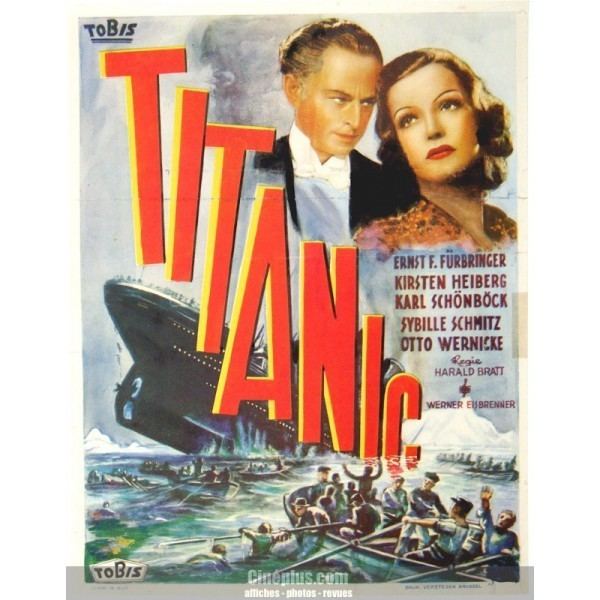
At the British Inquiry into the disaster, Peterson testifies against Ismay, condemning his actions, but Ismay is cleared of all charges and the blame is placed squarely on the deceased Captain Smith's shoulders. An epilogue states that "the deaths of 1,500 people remain un-atoned, forever a testament of Britain's endless quest for profit."
Production
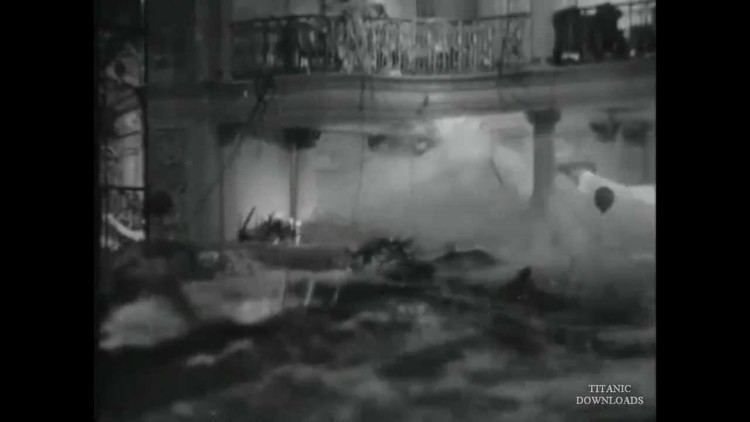
Most of the film was shot at the German-occupied Polish Baltic Sea port of Gdynia (renamed Gotenhafen), on board SS Cap Arcona, a passenger liner which eventually shared Titanic's fate; it was sunk a few days before the end of World War II by the Royal Air Force on May 3, 1945, with loss of life more than three times than that on the actual Titanic. The ship had been turned into a floating prison and filled with Jewish prisoners that the Nazis had put there in hopes that the ship would be destroyed by the British.

The scenes with the lifeboats were also filmed on the Baltic Sea; some of the interior scenes were shot in Tobis Studios.
Titanic endured many production difficulties, including a clash of egos, massive creative differences and general war-time frustrations. As filming progressed, more extravagant sets were demanded by Salpin, as well as additional resources from the German Navy – these demands were all approved by Goebbels, despite the mounting costs and the drain on the wartime German economy.
After one week of troubled shooting on Cap Arcona, with the Allies bombing not far away, Herbert Selpin called a crisis meeting where he made unflattering comments about the Kriegsmarine officers who were supposed to be marine consultants for the film, but were more interested in molesting female cast members. Selpin's close friend and the co-writer of the script, Walter Zerlett-Olfenius, reported him to the Gestapo, and Selpin was promptly arrested and personally questioned by Joseph Goebbels, who was the driving force behind the Titanic project. Selpin, however, did not retract his statement – infuriating Goebbels, since the Propaganda Minister had personally chosen Selpin to direct his propaganda epic. Within 24 hours of his arrest, Selpin was found hanged in his jail cell, which was ruled a suicide. However, in reality, Goebbels had arranged for Selpin to be hanged and the hanging framed as a suicide. The cast and crew were angry at the attempt to cover up Selpin's obvious murder and attempted to retaliate, but Goebbels countered them by issuing a proclamation stating that anyone who shunned Zerlett-Olfenius, who had reported Selpin, would answer to him personally. The unfinished film, on which the production costs were spiraling wildly out of control, was in the end completed by an uncredited Werner Klingler.
The film cost almost 4 million Reichmarks, or the equivalent of US$180 million (2013). It is said to be the most expensive film of its time.
Themes and propaganda context
The faults of capitalism and the stock market play a dominant role throughout the movie. Titanic makes the allegory of the liner's loss specifically about British avarice rather than, as most retellings do, about hubris. This fits in with other works of anti-British propaganda of the time such as The Maiden Joanna, The Heart of a Queen, The Fox of Glenarvon, Uncle Krüger, and My Life for Ireland.
Undermining the intended effect were the scenes of British and French panic and desperation. Scenes of steerage passengers separated by crew members and desperately searching for their loved ones through locked gates and a chain link fence bore an uncanny resemblance to what was happening in German concentration camps during that time. This contributed to the film being banned by Goebbels inside Germany.
Reception
The film's premiere was supposed to occur in early 1943, but the theatre that housed the answer print was bombed by Royal Air Force planes the night before. The film went on to have a respectable premiere in Paris in November 1943 "where it was surprisingly well-received by its audience", and also played well in some other capital cities of Nazi-occupied Europe such as Prague. But Goebbels banned its playing in Germany altogether, stating that the German people – who were at that point going through almost nightly Allied bombing raids – were less than enthusiastic about seeing a film that portrayed mass death and panic.
Titanic was re-discovered in 1949, but was quickly banned in most western countries. Shortly after the war, the film, dubbed in Russian, was screened across the Eastern Bloc as a "trophy film." After the 1950s, Titanic went back into obscurity, sometimes showing on German television. In 1992, a censored, low quality VHS version was released in Germany. This version deleted the strongest propaganda scenes, watering down its controversial content. Finally, in 2005, Titanic was completely restored and, for the first time, the uncensored version was released in a special edition DVD by Kino Video.
A Night to Remember
Four clips from the film were recycled and used in the successful 1958 British film A Night to Remember: two of the ship sailing in calm waters during the day, and two brief clips of a flooding walkway in the engine room.
In popular culture
References
Titanic (1943 film) WikipediaTitanic (1943 film) IMDb Titanic (1943 film) themoviedb.org
